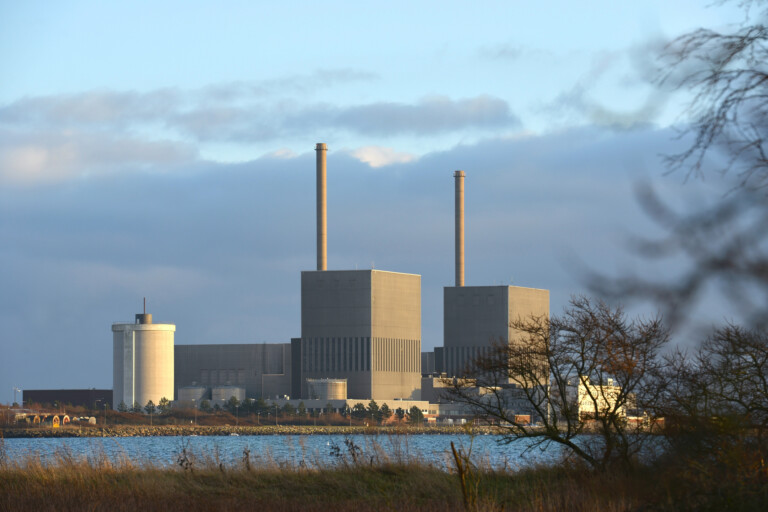Transport
Rock spoil from the metro can become new islands

Expansion of the Stockholm Metro is underway, and huge masses of unearthed rock that are piling up need somewhere to go. The rock spoil is being temporarily dumped around the outskirts of the city. But a new research project is trying to find more sustainable solutions. How about building an island?
Prenumerera på Extrakts nyhetsbrev!
Läs mer
Håll dig uppdaterad! Få kunskapen, idéerna och de nya lösningarna för ett hållbart samhälle.
Personal data is stored only for the mailing of Extrakt newsletters and information related to Extrakt’s operations. You can cancel the newsletter at any time, which means you will no longer receive any emails from us
The rock spoil from the metro expansion is currently being transported on flatbed lorries from the central parts of the capital city to landfill sites in Botkyrka, Barkarby and Upplands Väsby.
“It’s being piled up and up and up,” says Luc Pagès, construction engineer at the City of Stockholm.

Without a new solution, Stockholmers will have to get used to the sight of convoys of heavy transport lorries throughout the city. Within two to three years, they can expect 40–60 trucks on the streets every day. To find a sustainable solution, several organisations and a wide range of experts have teamed up in a newly launched research project. One proposal involves using the rock spoil to expand quays or create new islands where housing could be built, for example.
“Building an island might sound bold and utopian, but most of Stockholm was actually created from rock spoil,” says Ania Öst, architecture researcher at KTH Royal Institute of Technology.
Both Gamla Stan and Blekholmen were partly built from rock spoil and garbage. Even these days, similar initiatives are already underway. Rock spoil from Norra Djurgårdsstaden, for example, will be used to build a quay.
“Stockholm needs more space”
The rock spoil being dug up as Stockholm grows is composed of granite. It comes in all possible sizes and has to be crushed before it can be used. The rock spoil also needs to be washed to remove nitrogen from the explosives. This is a vital step for rocks that will be off-loaded into the Baltic Sea, where eutrophication already poses a major problem.

Using rock instead of concrete to build quays brings several benefits, according to Pagès. Quays in concrete require maintenance, but building with rock spoil eliminates the need for maintenance. He believes that the idea of using the rock spoil for quays in particular shows great promise. So how about enlarging Djurgården to make more room for Gröna Lund to expand?
Architect and city planner Marta Bohlmark notes that the need for space is great in Stockholm. This speaks to the idea of using the rock spoil to create new land where, for example, innovative habitats could be built for Stockholmers. Building islands or quays would also avoid the need to transport the rock through the city on lorries. It would allow barges to be used instead, reducing emissions as well as wear on the roads.
Another idea is to use the rock spoil to create artificial reefs and thus improve the marine environment in the Baltic Sea.
“The idea is to create new habitats for fish, which could also encourage recreational fishing,” Öst says, adding that no decision has been made yet.
“Our entire project is about investigating the needs of the city and seeing how the rock spoil can be turned into a resource,” she says.
Can replace concrete
Marta Bohlmark believes that the rock spoil presents an opportunity for the construction industry to get involved in sustainable innovation around material selection.

“It’s one of the biggest emitters, mainly because of the concrete. Large amounts of concrete could be replaced by rock – and we sure do have the rock,” she says.
She describes it as unique for our times that we have such huge volumes of rock we don’t know what to do with. She calls it a “supersize surplus”. The metro expansion alone will generate 7.5 million tonnes of rock spoil in parallel with construction of the Stockholm Bypass and a number of smaller buildings, which is also generating residual masses.
While the current situation with vast quantities of rock is unique, this is not the first time Stockholm has been confronted with the question of what to do with rock spoil. The same question was asked when the metro was expanded in the 1950s and 60s, resulting in ten artificial hills around the city.
“Thanks to that, you can now go skiing in Hammarbybacken and enjoy the view from Högdalstopparna,” Bohlmark says.
In the 1950s and 60s, artists were involved late in the process after the decision was made to turn the rock spoil into hills. But today researchers want to ensure that artists have their say early on, even after the city decides how to use the rock. Bohlmark believes that artists can bring a fresh perspective on what can be accomplished.
Piles of rock build up a heap of problems
Luc Pagès finds it remarkable that metro construction is already underway with no long-term plan in sight for the rock spoil. A sustainable solution is urgently needed, he says. The longer the spoil lies around in temporary piles, the more likely it will impact the surrounding environment. The piles of rock are also perceived as ugly.
Ania Öst believes that the issue has stalled because it is complex and affects many different stakeholders and experts. Even though the region is in charge of building the metro, the rock spoil also affects the municipality, whose decisions affect several different municipal departments.
Artists, architects, political officials and economists all play an important role in the process, making management difficult, she says. The researchers want to help find a solution to the question of what to do with the spoil. As part of the project, they will also investigate different methods for broad collaboration.
“I think we’ll be able to help develop a method for working across silos, especially with an eye to the artistic processes and creative solutions we need in our time,” Öst says.
BROAD COLLABORATION AROUND THE ROCK SPOIL
The project MASSA (an acronym that roughly translates to “New methods and artistic practices for system complexity reshape Stockholm’s archipelago”) is a collaboration among the City of Stockholm, researchers at KTH, the research-oriented architecture firm GAIA Arkitektur, and the research and artistic studio Erixon Aalto. The project involves a wide range of experts and stakeholders who are aiming to find a sustainable solution that utilises the spoil as a resource.
HOW THE ROCK SPOIL CAN BE USED
Building an artificial island of about 1.8 hectares requires 3.5 million tonnes of rock spoil if the depth to the bottom is 40 metres. This would create an island the size of two football pitches.
Hammarbybacken was built from approximately 3 million tonnes of rock spoil.
An artificial reef measuring 100 metres long and 3–4 metres deep can be built from roughly 10,000 tonnes of rock.
Massive amounts of rock:
• The ongoing metro expansion: 7.5 million tonnes of rock spoil
• Stockholm Bypass: 14 million tonnes
• Metro line extension in the 1950s and 1960s: Roughly 30 million tonnes.
Reduced emissions:
Using rock spoil instead of concrete can help to reduce carbon dioxide emissions. One tonne of cement has a 900-kilogram carbon footprint in direct emissions. The amount of carbon dioxide generated by the rock spoil largely depends on how it is transported. Delivering it for sea transport to a port within a 10-kilometre radius of the tunnel can slash emissions by about 80 percent compared with concrete production.








